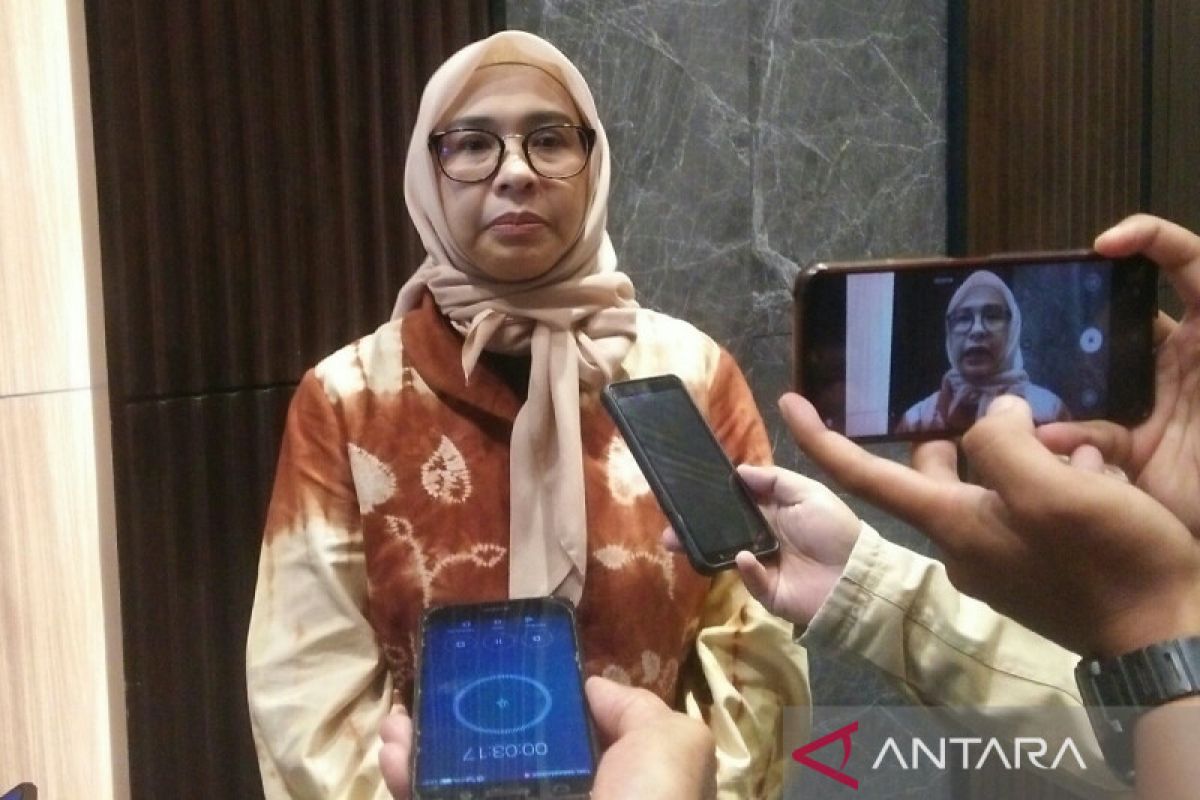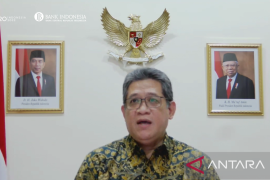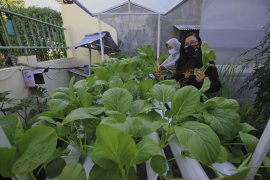Starting at the end of 2023 or early 2024, some state civil apparatus will start working from IKN. Their relocation must be accompanied by the fulfillment of basic needs, such as water, electricity, and food.
Until now, East Kalimantan Province, with a population of 3.79 million people, still needs to procure its food supply from external parties. With the existence of IKN Nusantara, which increases the number of residents, the region certainly needs a way to fulfill its food availability.
For instance, the province still needs to buy food crop products, horticulture, and animal husbandry products, such as beef and lamb, especially cattle, reaching 72 percent, from outside the region.
Hence, the East Kalimantan government should be able to manage food availability in line with the increasing number of residents. It is estimated that in 2045, IKN Nusantara alone will be inhabited by around 1.9 million people.
The guarantee of food availability was also emphasized by the Deputy for Environment and Natural Resources of the Indonesian Capital City Authority (OIKN), Myrna A. Safitri.
Safitri remarked that in IKN’s core area, some 24.7 hectares of agricultural land are designated to build local food security.
The land will be utilized as one of the main principles of a circular food economy. The authority will also carry out sustainable intensification, including the expansion of land to a minimum of 25,600 hectares, or 10 percent of the area of IKN.
While for agricultural land throughout East Kalimantan, especially in areas close to IKN, a data-based approach is needed as a projection of land use, food productivity, and food consumption driven by sustainable intensification efforts until 2045.
The OIKN team is also determining the protection of sustainable food agriculture land (LP2B), starting from planning, inventory, identification, research, determination, and development to community outreach and land control.
Broadly speaking, the food security strategy in IKN comprises various elements, such as maintaining some of the assets of agricultural areas with agricultural activities that have been running for years, with local residents as farmers.
This is followed by carrying out sustainable intensification of agriculture, plantations, animal husbandry, and fisheries that are currently underway in the IKN area and its surroundings.
Safitri emphasized that the existing land must be utilized, especially through agricultural technology to boost productivity. Hence, farmers also need coaching and assistance on an ongoing basis.
Another aspect that must be carried out is the development of food estate in East Kalimantan as a relocation area for local food production areas that are affected by development of the IKN area.
This includes making recommendations for urban farming, utilization of food waste, and evaluation of value-added food industries, as a fulfillment of the circular economy of food production in cities.
Urban farming must be conducted to support agricultural cultivation for food crops, livestock, and plantations around IKN in order to bring benefits and added value for the locals to improve their welfare.
"We must be able to produce healthy and quality food to be able to apply smart farming, which is an agriculture practice without chemical materials that do not pollute the environment. All of our agriculture processes will use organic materials,” she noted.
At a symposium, titled "Strengthening Sustainable Agricultural Ecosystems to Support Food Security in IKN and East Kalimantan," in Samarinda on July 11, she emphasized that all development plans in IKN are being carried out in stages and carefully and sustainably.
Area of LP2B in IKN
OIKN’s Acting Director of Food Security, Setia Lenggono, stated that the projected need for LP2B in IKN until 2045 reaches 84.25 thousand hectares, comprising nine main commodities.
The details are for the corn commodity covering an area of 19,008 hectares of the LP2B land, with a productivity of 3.24 tons per hectare, to meet the consumption requirement of 100,270 tons per year to support the IKN population of some 1.9 million people in 2045.
This is followed by the rice commodity that requires a land area of 22.45 thousand hectares, with a projected productivity of 9.87 tons per hectare, in order to meet the consumption needs of the IKN population, with a requirement of 221,630 tons per year, or each resident consuming an average of 116.6 kg of rice per year.
The third is vegetable commodities, with the demand projected at 217.25 thousand tons in 2045. Hence, 13,780 hectares of LP2B is needed, with a productivity of 15.77 tons per hectare.
The fruit commodity is projected to require 1,605 hectares of land, with productivity of 81.12 tons per hectare, which will produce fresh fruit to meet the consumption of 130.35 thousand tons per year.
Next are soybeans and oil crops, which are expected to be able to meet the needs of IKN residents, with a total of 30,525 tons. To meet this requirement, an LP2B land area of 15,042 hectares, with a productivity of 2.03 tons per hectare, is required.
Meanwhile, the need for cassava and other tubers for IKN residents in 2045 is predicted to be 98,975 tons and requires an LP2B land area of 3,186 hectares, with a productivity of 31.06 tons per hectare.
Next, the need for ruminant meat for IKN residents is projected to be 8,343 tons. To meet this requirement, a livestock area of 7,299 hectares is needed to produce carcass meat of 1.14 tons per hectare.
The poultry meat commodity requirement is expected to be 35,113 tons. To achieve this, a land area of 1,824 hectares is needed to produce 12.84 tons of poultry meat per hectare.
Lastly, the region will also need 27,491 tons of fresh milk per year. To fulfill this requirement, 56.25 hectares of land to raise milk-producing animals is needed to produce 488 tons of fresh milk per hectare per year.
Urban farming
To meet food needs of the IKN population, OIKN does not only rely on special agricultural land but will also utilize yards, roofs of buildings, and landless farming, such as hydroponics, for urban farming.
Director General of Food Crops from the Agriculture Ministry Yudi Sastro stated that urban farming can support between 30 and 40 percent of food needs in the IKN area.
Urban farming can be applied in almost all places in the IKN area, starting from Ministerial buildings in Central Government Core Areas (KIPP), rooftops in flats, green open spaces (RTH), and yards of each house and building.
To achieve this, IKN residents must be invited to support the effort through the concept created by OIKN.
The approach to organic, environmentally-friendly crop cultivation and the utilization of municipal organic waste can be applied to conduct urban farming. Therefore, this method can produce healthy and quality food without the use of chemicals.
Through this method, IKN residents can utilize their yard to plant horticulture crops for meeting their daily basic needs by using pots, planting bags, or polybags to plant chilies, tomatoes, vegetables, onions, and other necessary food commodities.
Ultimately, land availability, as planned by the authority, provides assurance of guaranteed food availability for residents in the new capital city, not only in terms of the quantity but also in healthier quality since all aspects of crop and livestock production have been designed from the start by implementing organic farming.
Related news: Climate change threatens food security: BMKG
Related news: Bapanas outlines efforts to ensure food security
Related news: Ministry encourages districts to cultivate 1,000 hectares of land
Translator: M.Ghofar, Resinta Sulistiyandari
Editor: Azis Kurmala
Copyright © ANTARA 2023












